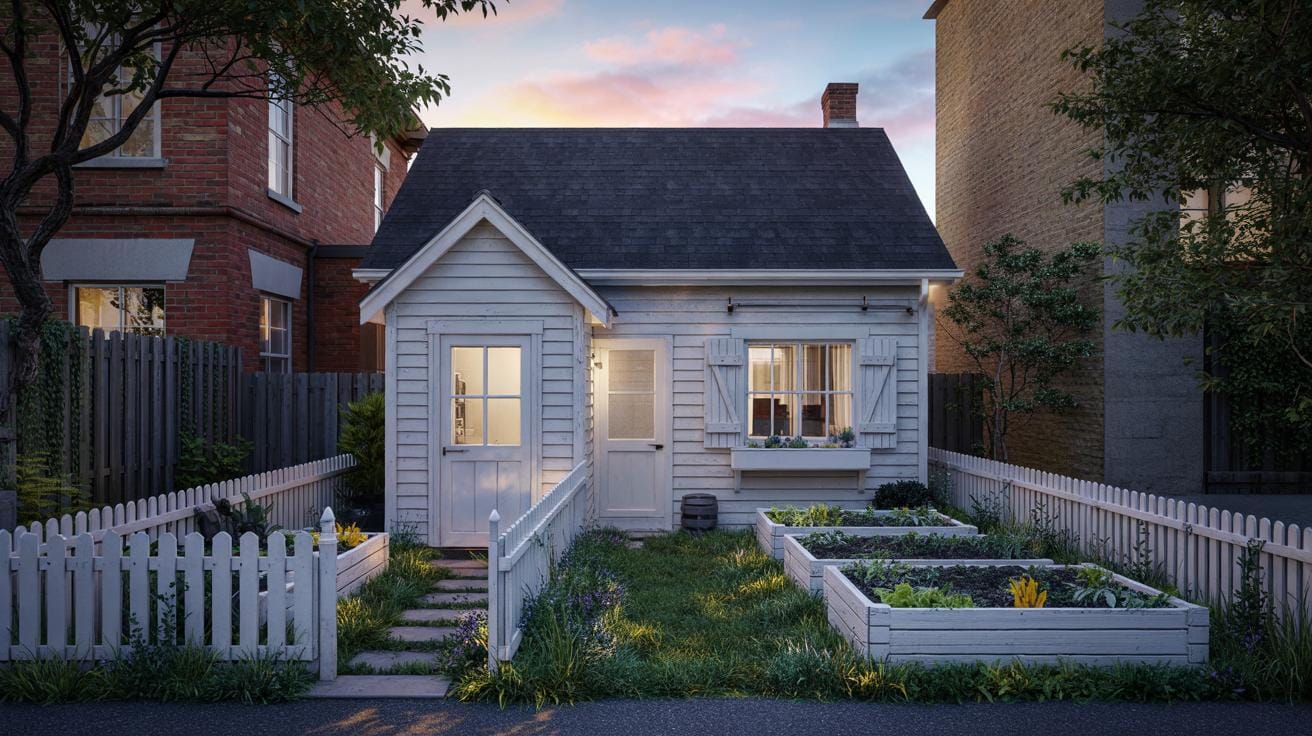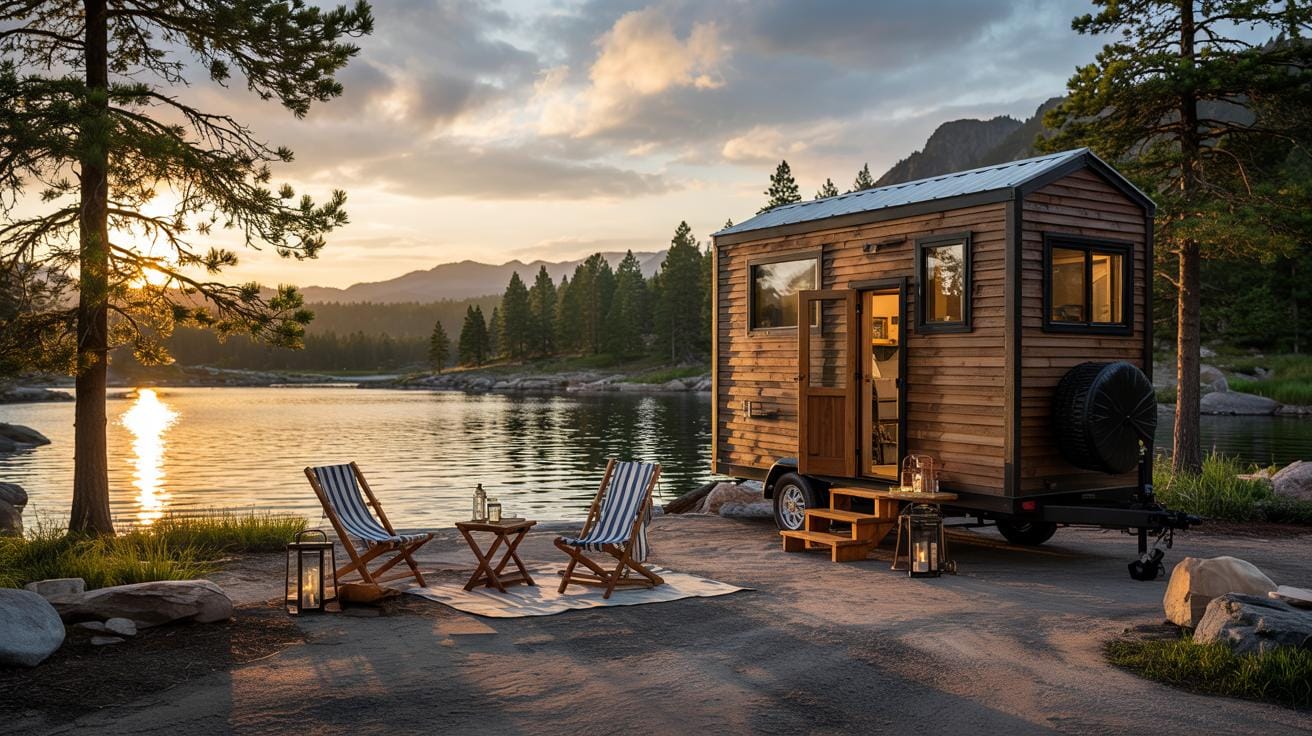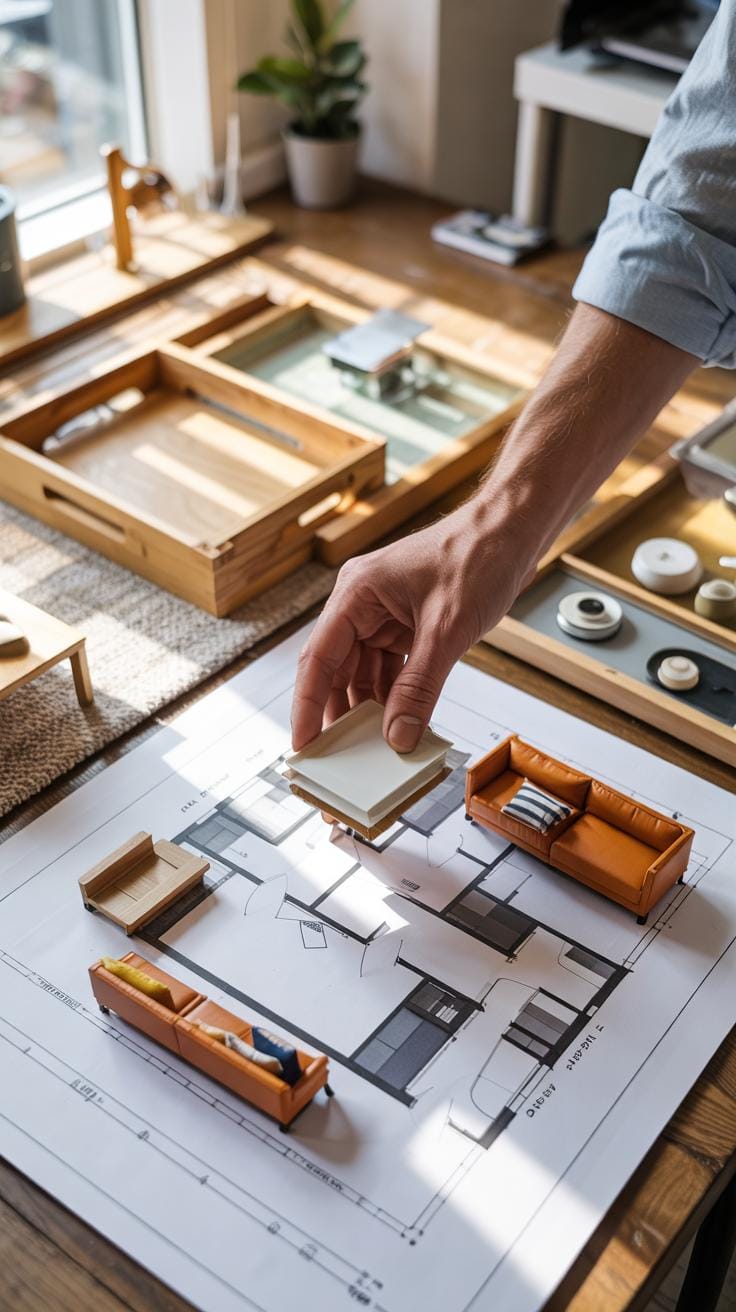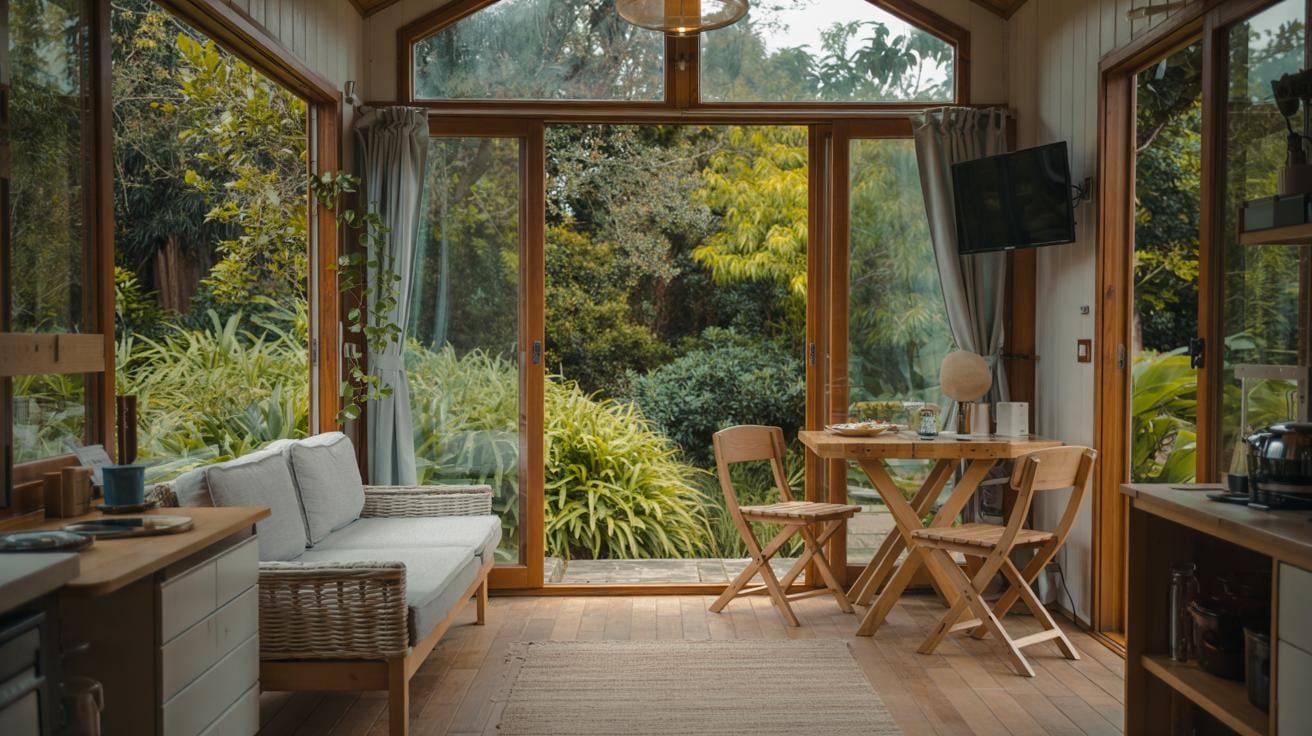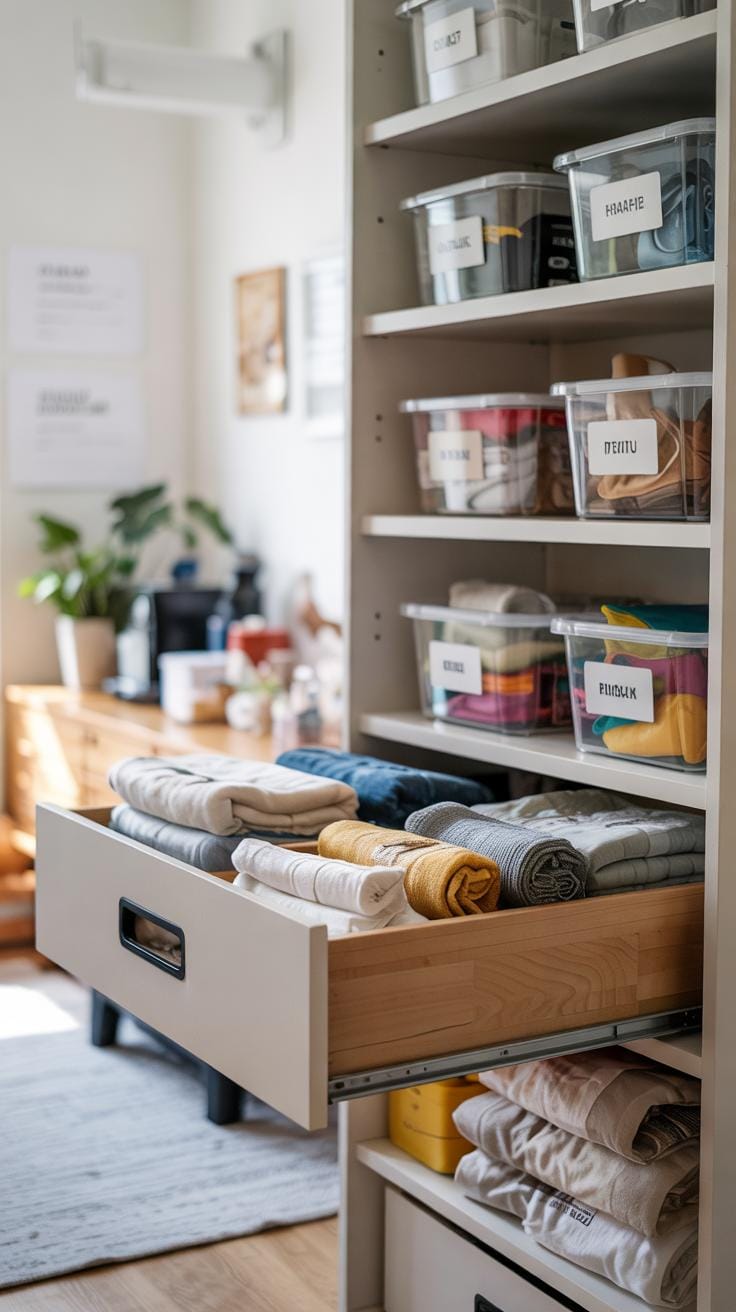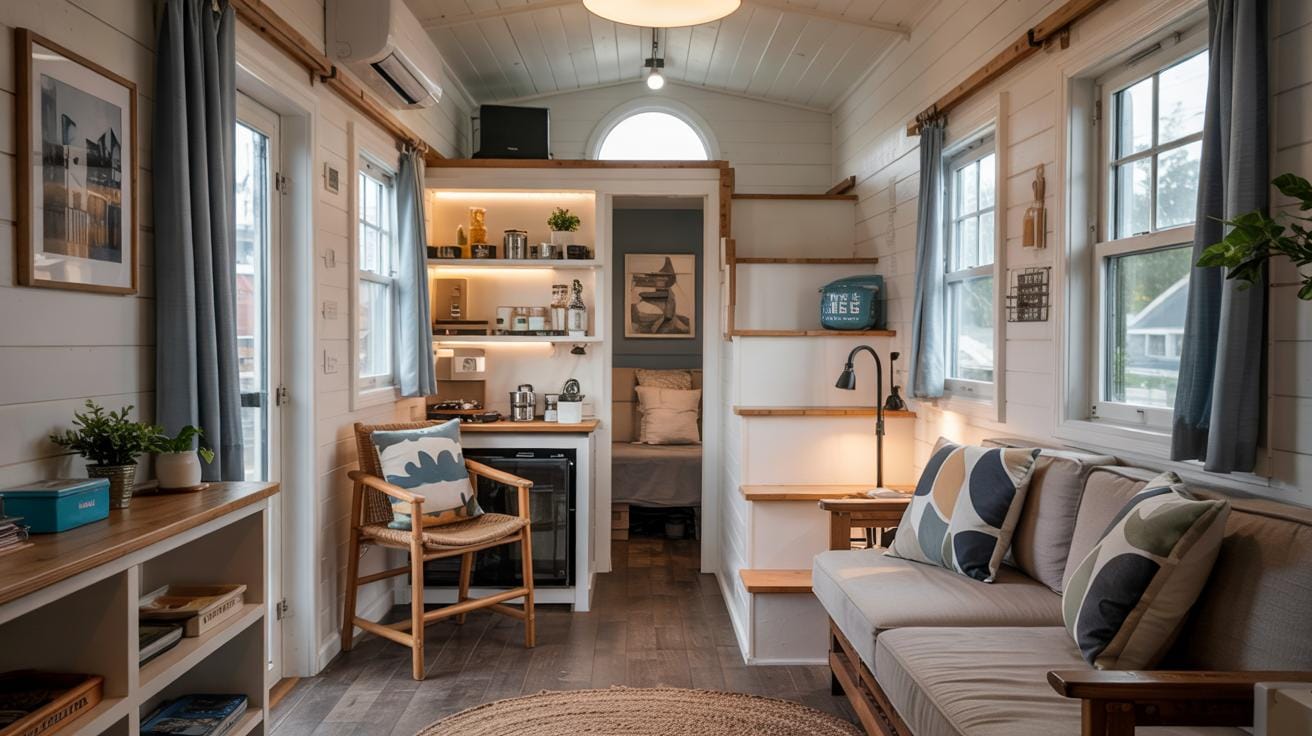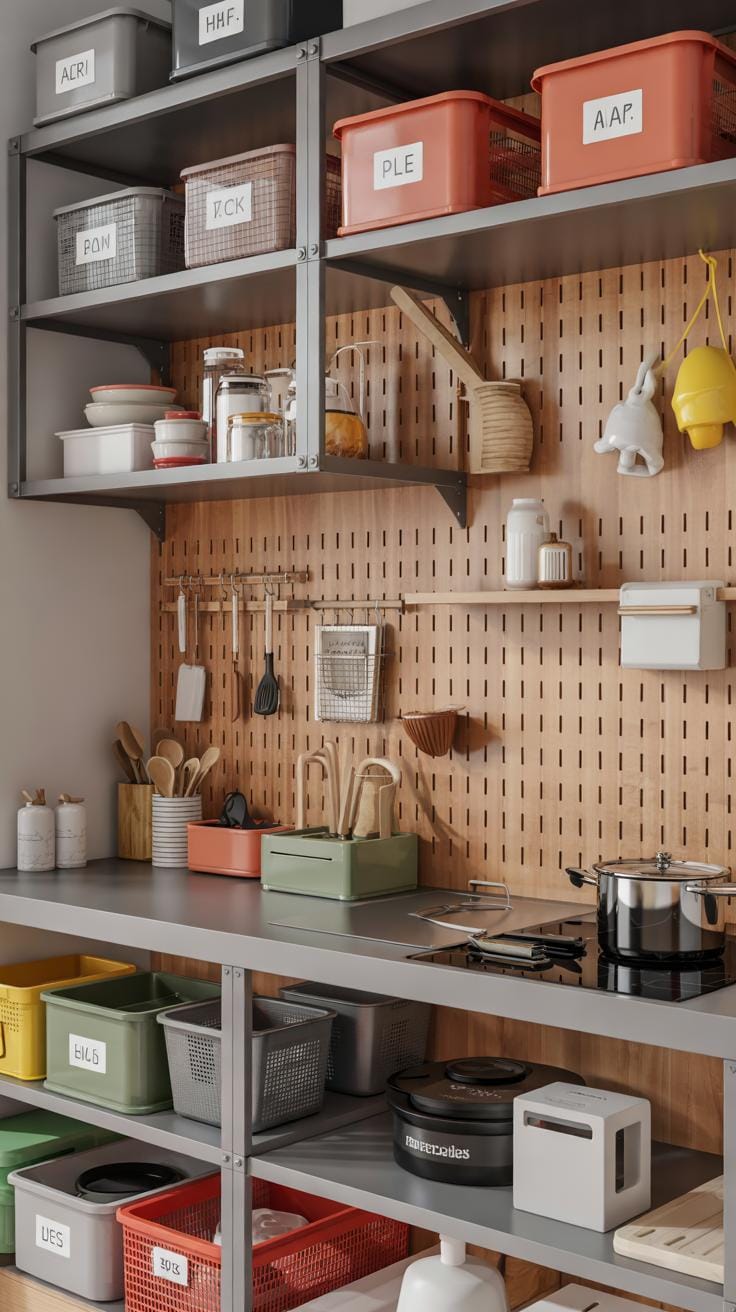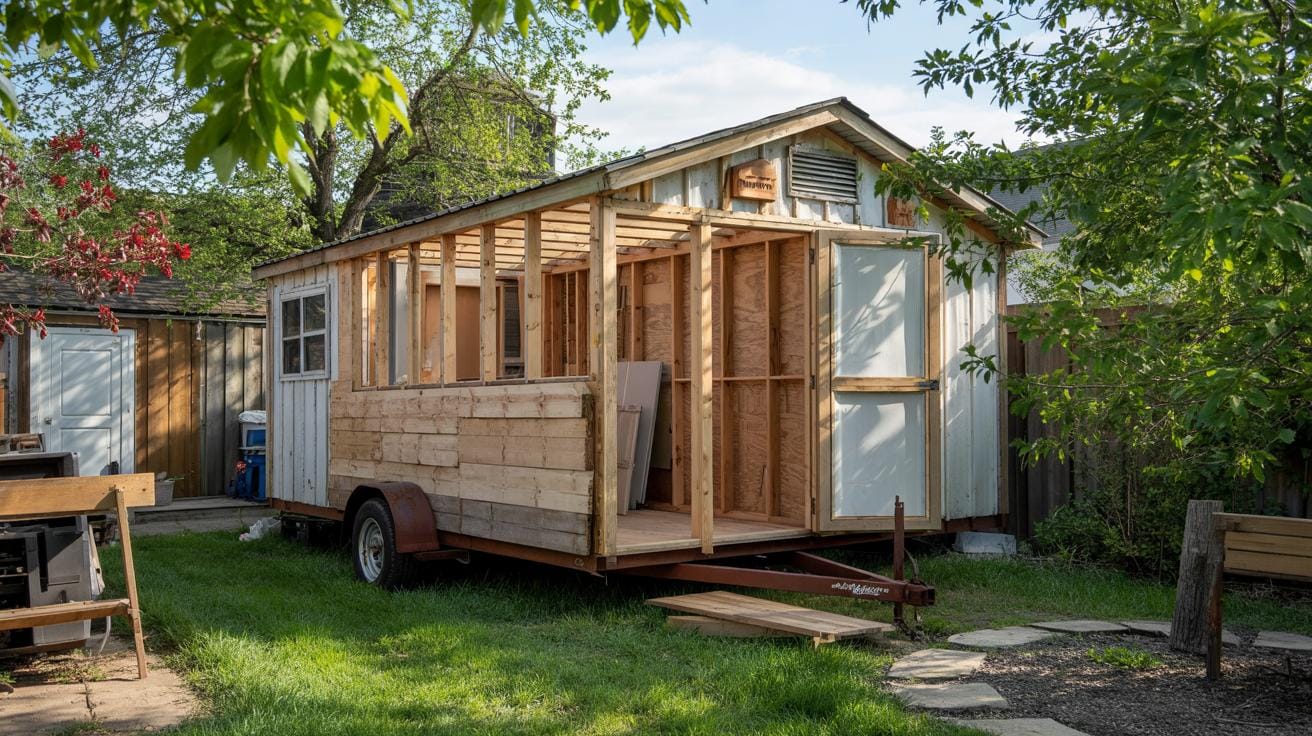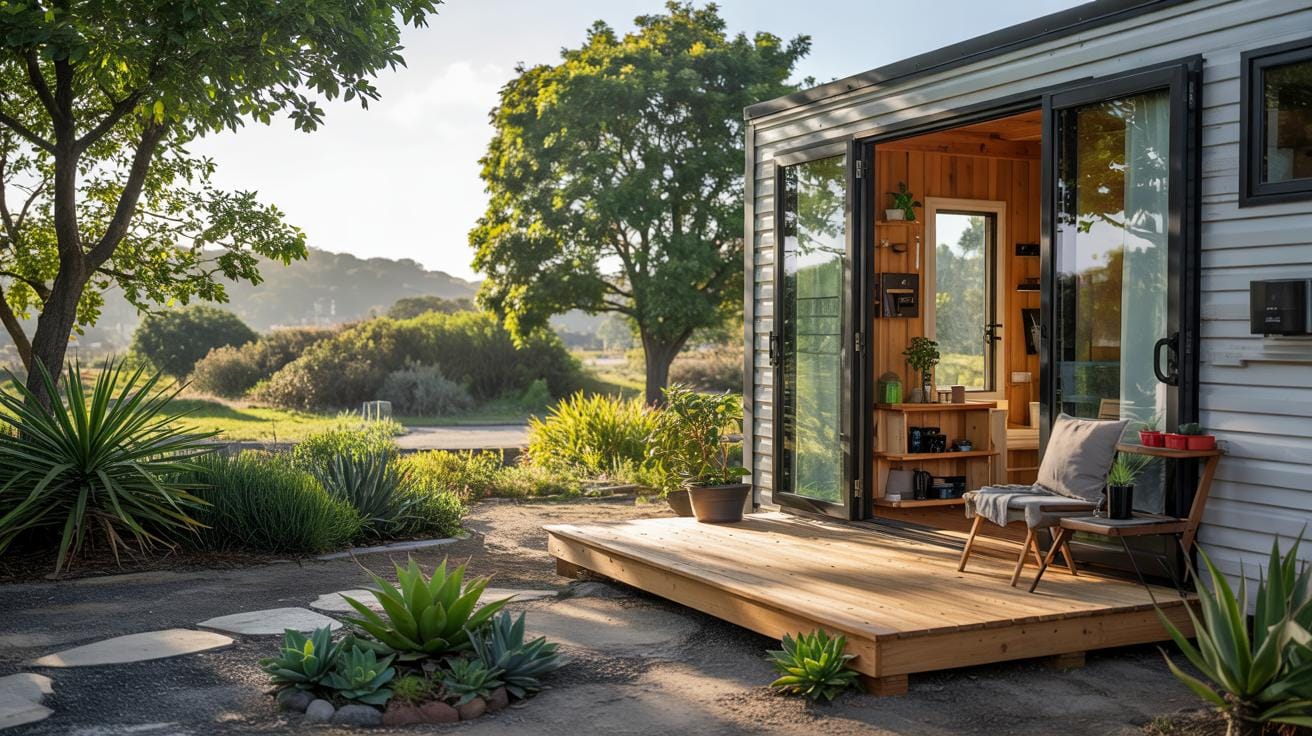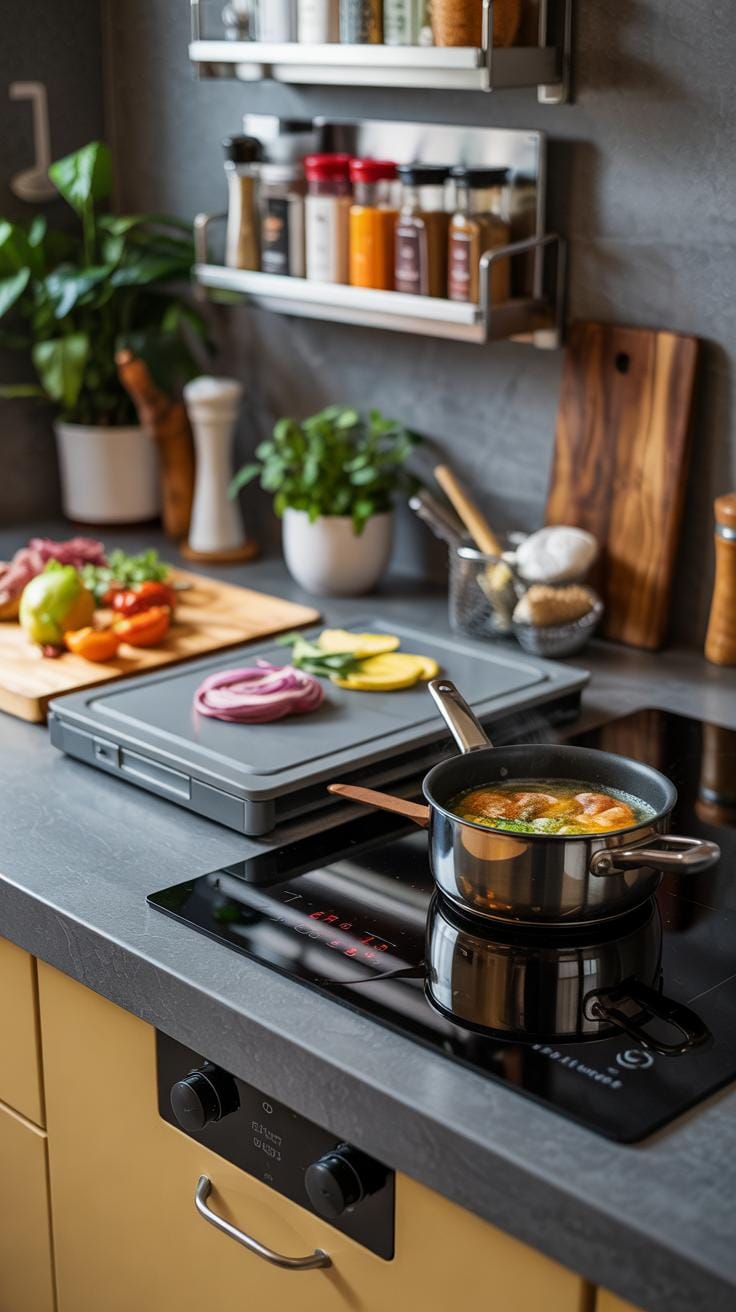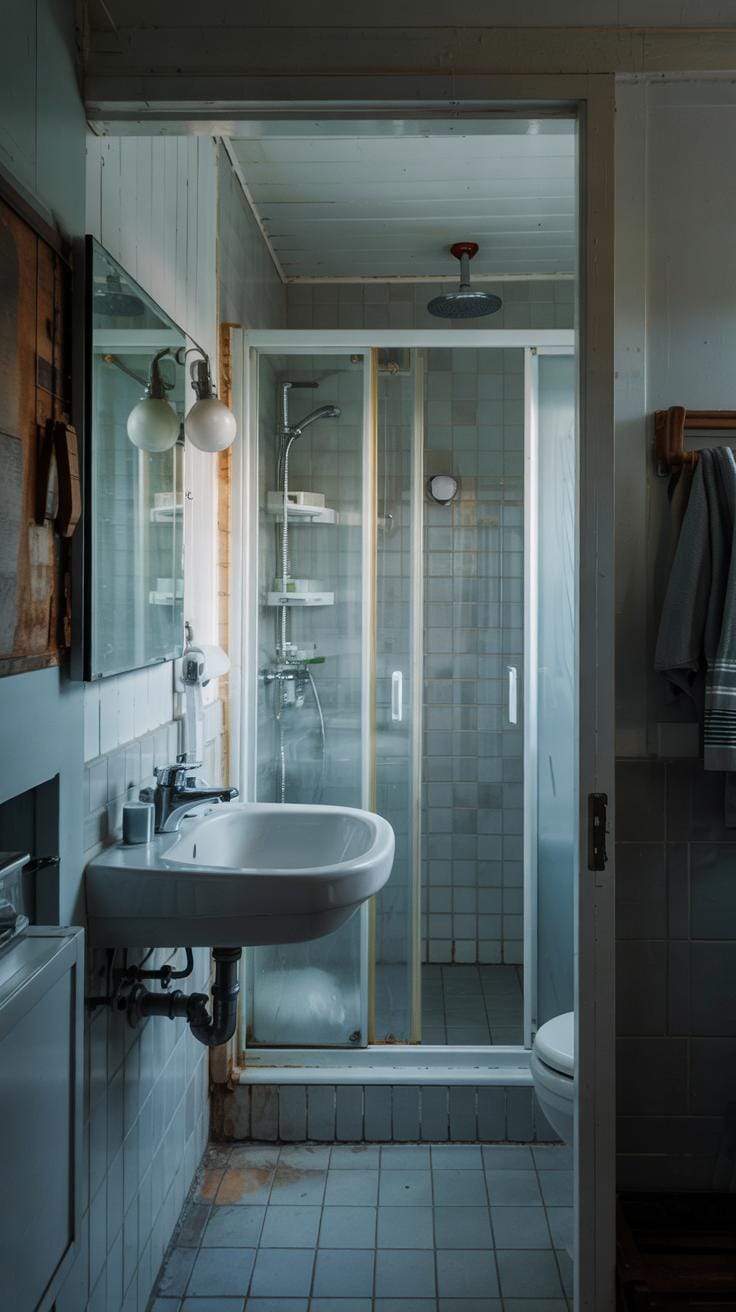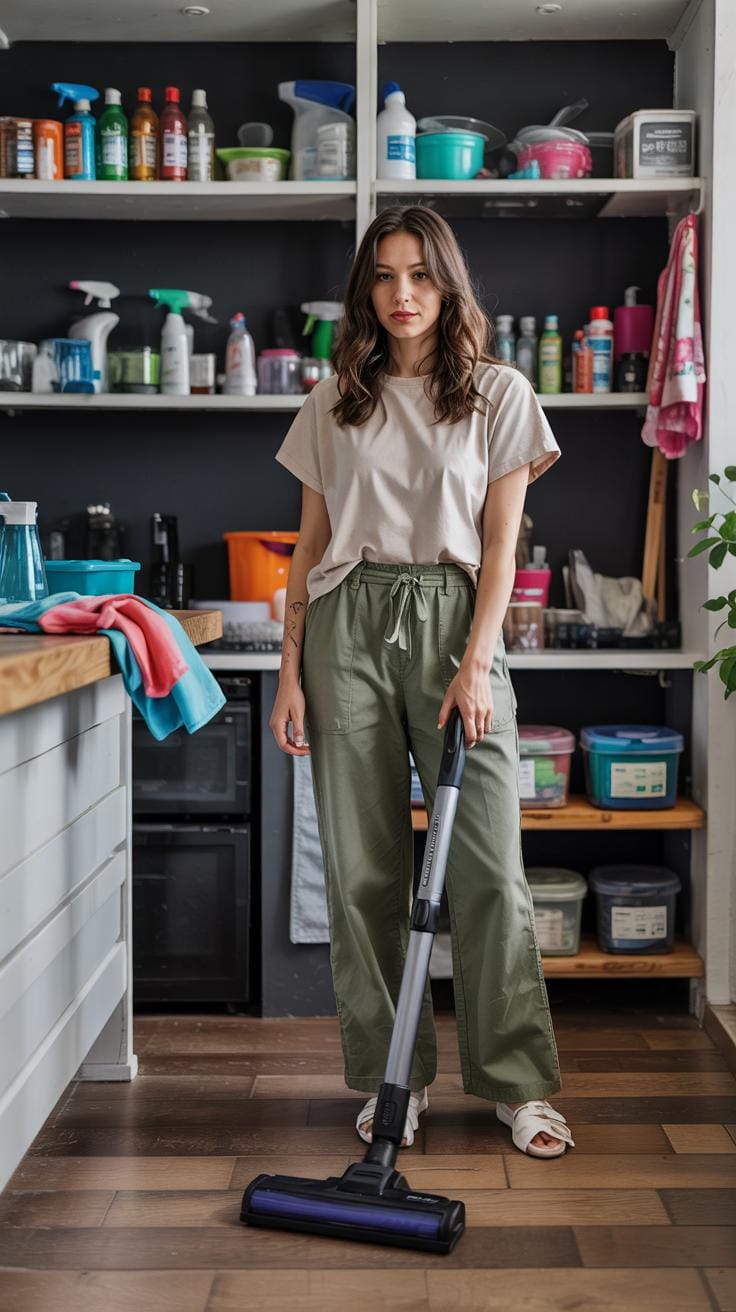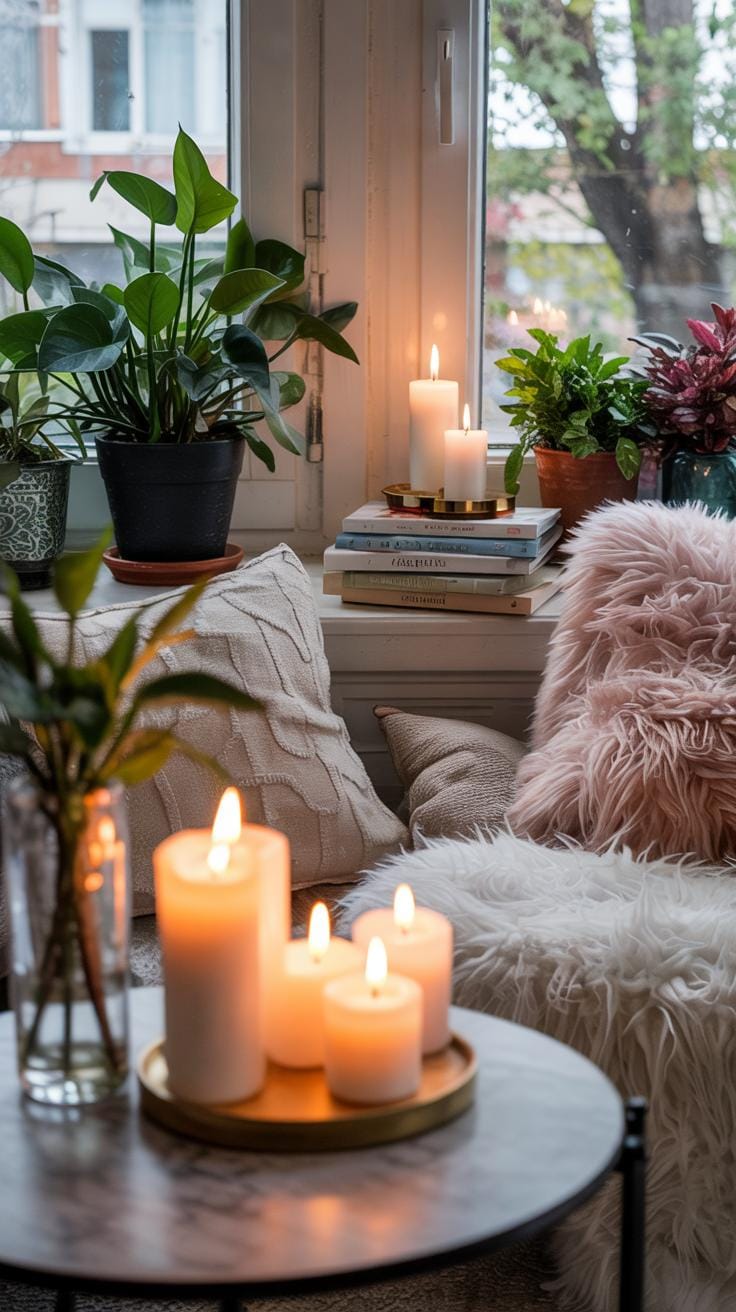Introduction
The tiny house movement promotes simplifying living spaces to create affordable, efficient homes with less than 400 square feet of living area. You may want to downsize or explore this lifestyle for its affordability and environmental benefits. Living in a tiny house means you have less space but it offers the chance to focus on what truly matters. You will find ways to design your tiny home to suit your needs and reduce waste without sacrificing comfort.
Embracing tiny house living requires smart strategies. You will need to consider how to organize belongings, optimize storage, and create a comfortable environment with limited room. This article will provide you with practical hacks to enhance your daily life in a tiny house. Are you ready to explore how to live comfortably and efficiently within a small footprint? Keeping your space functional and cozy is possible with the right techniques.
Understanding the Tiny House Movement
The tiny house movement began gaining attention in the late 1990s and early 2000s, driven by people seeking affordable, simpler lifestyles. Economic challenges and a desire to reduce environmental impact motivated many to downsize their homes.
Tiny houses typically range from 100 to 400 square feet, though some extend up to 600 square feet. These compact homes come in various forms like trailers built on wheels for mobility, fixed cabins on foundations, and even houseboats for water living. Each style offers unique advantages depending on your needs and location.
Seeking less clutter and more freedom often leads people into tiny house living. How could less space change the way you live and spend your time? Understanding these options helps you decide the right fit for your lifestyle.
History and Definition of Tiny Houses
The tiny house movement started as a response to rising housing costs and environmental concerns. Early pioneers wanted homes they could afford and maintain easily. Over time, the community grew, fueled by social media and stories of financial independence.
Most tiny homes measure between 400 and 600 square feet. This size limit keeps the space manageable while providing essential living areas. Building on trailers remains popular because it offers mobility and avoids some building codes, while small cabins and houseboats serve fixed or niche needs.
Have you thought about which type matches your goals? Picking the right style sets the foundation for comfortable living in limited space.
Common Uses and Social Impact
Tiny homes serve many purposes beyond personal living spaces. People use them as affordable housing solutions, especially when traditional homes are out of reach. Some cities deploy tiny homes to help homeless individuals regain stability. Disaster relief programs also turn to small houses for quick, cost-effective shelter.
Despite benefits, tiny house owners often face legal challenges. Zoning laws may restrict size or mobile living, making it tough to find suitable land. These issues highlight the tension between housing needs and local regulations.
Could tiny houses reshape housing affordability and community planning? Your choice can contribute to a larger social impact while improving your living comfort.
Planning Your Tiny Home Layout
Start by deciding what you need to live comfortably in your tiny house. You can’t fit everything, so focus on essential rooms and functions that fit your lifestyle. Think about how you use each area daily. Is cooking more important than having a separate workspace? Can your sleeping area double as storage or seating?
Write down all the activities you want to include, then rank them by priority. This helps you avoid filling your home with unnecessary spaces and clutter. Consider spaces that serve multiple purposes, like a dining table that folds down into a desk, or a sofa that converts into a bed.
Plan your furniture and zones so they flow logically. Place the kitchen near the entrance if you bring in groceries often. Keep pathways clear to move around without obstacles. Choose foldable or movable furniture to change the space when needed, like a fold-up table or stackable chairs. These choices save space and make living easier.
Maximizing Storage in Small Spaces
Finding enough storage in a tiny house means using every inch wisely. You can increase your storage without making the space feel cramped. Think beyond typical cabinets and drawers. Look for spots often ignored, like corners or under furniture. These hidden spaces can hold items you use less often, keeping your main areas clear and open.
Do your belongings have a set place? When you assign specific spots, you cut down on clutter. Using containers or baskets that fit the space helps keep similar items together and easy to find. Before adding new storage units, ask yourself what you really need to store. Sometimes, less stuff means more comfort.
Using Vertical and Hidden Spaces
Walls are great for storage. Mount shelves to keep books, plants, or kitchen tools off counters. Installing hooks or pegboards can hold bags, coats, or utensils within easy reach. Under-bed storage is another smart option. Drawers or bins here are perfect for clothes, shoes, or linens.
Built-in cabinets work well when designed to fit your tiny home’s layout. These cabinets use space up to the ceiling, freeing up floor area. When you use vertical storage, you open up the floor for walking or furniture. What vertical spaces do you have that could hold more without crowding?
Multi-purpose Furniture
Furniture that serves two roles saves room and money. Storage ottomans let you keep blankets or books inside while offering a place to sit or rest your feet. Sofa beds with drawers can store bedding or toys, turning the living room into a guest room quickly.
Fold-down tables create workspace or dining areas without taking up permanent room. When folded, they disappear, freeing space for daily activities. Picking furniture that works double-duty helps you live comfortably without extra clutter. What multi-function item could simplify your space today?
Organizing Your Tiny House for Daily Efficiency
Keeping your tiny house organized is key to living comfortably in a small space. Without order, clutter builds up quickly and can make your home feel cramped.
Start by creating simple systems to keep belongings in dedicated spots. Think about where you use things most often. For example, place everyday kitchen tools near your cooking area, and store cleaning supplies under the sink for easy reach.
Make it a habit to put items back immediately after use. This habit saves time searching later and stops piles from forming on counters or tables. Ask yourself, “Where is the best place for this item?” Often, a spot outside the main living area works best.
Use vertical space wisely by adding shelves or hooks. Instead of letting things spill onto surfaces, hang pots, bags, or clothes where they fit neatly. Your goal is to create an environment where everything has a clear home.
Establish Daily Routines
Daily routines help keep your tiny house tidy and your mind clear. Choose one or two small tasks to do each day, like wiping down counters or sweeping the floor. Doing this daily avoids large messes that take hours to clean.
Spend just 10 minutes each evening tidying up. Put away stray items, fold blankets, and check for things you don’t use anymore. These quick actions build a sense of space and calm in your home.
Have you thought about how a regular cleanup routine might change how you feel in your tiny house? Consistency makes a bigger difference than a big weekly effort.
Utilize Containers and Labels
Containers keep small items from spreading everywhere. Clear bins or boxes let you see what’s inside without opening them. Use containers to separate items by type, like toiletries, craft supplies, or electronics.
Labeling containers saves time and frustration. When you know exactly what’s inside each box or bin, you avoid digging through everything. Labels can be simple handwritten tags or printed stickers.
Stack containers safely to use storage spaces fully without making a mess. Tightly fitting bins also keep dust out, protecting your belongings. How might labeling change your search for often lost items?
Organizing your tiny house with daily habits, smart container use, and labels reduces clutter and helps you enjoy every corner of your home. Small efforts lead to big improvements in comfort and efficiency.
Optimizing Comfort in Your Tiny Home
Creating a comfortable tiny home requires careful attention to temperature, light, and furniture choices. Keeping your space cozy depends on managing heat flow and fresh air circulation. You can improve comfort by choosing furniture that fits your body and space well, supporting ease of movement and good posture. Thoughtful lighting improves mood and helps you stay productive, especially when natural light is limited. Consider how each element works together to create a space where you feel relaxed and energized every day.
Maintaining Thermal Comfort
Good insulation keeps your tiny house warm in winter and cool in summer by reducing heat loss and gain. Walls, floors, and ceilings need quality materials that trap air and block drafts. Ventilation plays a key role by exchanging stale air for fresh air without losing heat. Small fans or vents help balance airflow. When choosing heating, compact electric heaters or pellet stoves work well without taking up much room. How can you balance warmth and fresh air without overcrowding your tiny space? Experiment with timed ventilation or programmable heating to find your ideal comfort level.
Lighting and Ergonomics
Natural light brightens your home and improves wellbeing. Arrange windows and mirrors to spread sunlight deeper into your space. When daylight fades, use layered lighting with adjustable brightness and warm tones to avoid eye strain. Task lighting near work areas makes reading and cooking easier. Choose ergonomic furniture like chairs with lumbar support and tables at comfortable heights. Multi-purpose pieces, such as foldable desks or cushioned benches, save space while supporting your posture. What furniture shapes suit your daily activities best? Adjusting your setup regularly may keep your tiny home feeling fresh and healthy.
Kitchen Hacks for Tiny Homes
Choosing Compact Appliances
Your kitchen’s heart works best with appliances designed for small spaces. Opt for compact, multi-use gadgets. For example, a toaster oven that also bakes and broils can replace a regular oven. Choose a blender that doubles as a food processor to minimize countertop clutter. Select an induction cooktop that can be stored away when not in use to free up space. These appliances shrink your kitchen’s footprint but keep your cooking options wide open. Think about the meals you make daily and find gadgets that suit those needs while saving space. How often do you use certain appliances? Deciding this helps you avoid overcrowding your counter with unnecessary machines.
Smart Storage and Prep Areas
Space is scarce, so every inch counts. Use hanging racks for pots and pans, freeing up cabinet space below. Magnetic strips on walls hold knives and metal utensils, making them easy to grab and quick to store. Foldable surfaces that clip onto counters or walls can serve as extra prep space and fold away when done. Group items by use, such as keeping cutting boards near your prep area, so everything stays organized. You’ll cut down time spent searching for tools and reduce mess. What can you hang or attach near your work zones to clear the counters and stay efficient?
Bathroom Solutions for Small Spaces
Designing a tiny bathroom that feels comfortable starts with choosing fixtures that fit your limited space. Consider corner sinks that tuck into unused space, letting you move freely without bumping into the basin. Compact toilets take up less floor area but still provide full functionality, ideal for tiny homes where every inch counts. Shower-tub combinations bring dual use to a small footprint, so you get a relaxing soak or a quick rinse without needing separate zones. How could you redesign your bathroom to improve movement and comfort?
Organizing storage efficiently makes a huge difference. Open shelves or slim medicine cabinets hold toiletries within easy reach, clearing clutter from counters. Stretch vertical space by installing tall, narrow storage units. Good ventilation also protects your tiny bathroom from moisture damage. Choose exhaust fans or windows to allow air flow, reducing mold risk and keeping the room fresh. What storage ideas fit your daily routine? Can you boost airflow without sacrificing warmth or privacy? These choices keep your bathroom both practical and pleasant every day.
Daily Maintenance and Cleaning Tips
Keeping a tiny house clean does not require hours of work each day. You can maintain hygiene and keep your space looking good by adopting simple daily habits. Wiping down kitchen counters after every use prevents buildup and spills that attract pests. Taking a minute to put away items out of place stops clutter from piling up, making your home feel more open instantly.
In the bathroom, a quick swipe of the sink and toilet keeps things fresh. Sweeping or vacuuming the floors every day helps control dust and dirt that can accumulate in small spaces. These short routines save you time and effort later, making cleaning less stressful.
Do you find that clutter surprises you at the end of the day? Try a five-minute tidy-up before bed—your morning will feel brighter and more organized.
Quick Cleaning Routines
Set a short cleaning schedule for daily upkeep. Spend two minutes wiping the dining table and kitchen surfaces after meals. Keep a small bin handy to toss recycling and trash frequently, so it never overflows. Sort mail and papers right away to prevent piles from growing.
Check your entryway each day; putting shoes and jackets in their designated spots keeps traffic areas clear. Keep kitchen sinks clear of dishes by rinsing and loading them immediately or washing small loads daily.
Curious how small habits affect your comfort? These quick actions help your tiny home feel inviting without taking much time.
Using Effective Cleaning Tools
Choose cleaning products and tools that work well on multiple surfaces common in tiny houses. Multipurpose cleaners save space and work on countertops, floors, and bathrooms alike. Microfiber cloths attract dust without chemicals and dry quickly between uses.
A handheld vacuum is ideal for tight corners and small rugs. Invest in a scrub brush with a long handle to reach narrow gaps without strain. A spray bottle filled with vinegar and water offers an eco-friendly option for many surfaces.
How many cleaning tools do you really need? Selecting versatile, compact tools reduces clutter and boosts your cleaning efficiency.
Creating a Personal and Relaxing Atmosphere
Designing your tiny house to feel personal and calm starts with clear choices about what matters most to you. Think about the colors and objects that bring you peace. Avoid filling every corner with stuff. Instead, select a few special items that reflect your style and hold meaning.
Lighting plays a big role in mood. Soft, warm lights can make the space feel inviting without overwhelming it. Use curtains or blinds that let in natural light but also provide privacy when you need it. Keep surfaces clear to avoid visual noise, which can cause stress.
Ask yourself what makes you feel relaxed when you come home. It might be a cozy chair, a small shelf with your favorite books, or a piece of art that inspires you. Personalizing your tiny home with care helps turn it from just a place to live into a true retreat.
Minimalist Decor Strategies
Pick furniture and decor that serve more than one purpose. A bench with storage underneath, a fold-out table, or wall hooks that hold keys and bags can reduce clutter and keep your tiny home efficient.
Limit decorations to essentials that add value to your daily life. Choose simple designs rather than complex or bulky objects to avoid crowding. Avoid duplicates or things you rarely use.
Think about vertical space to store items. Shelves mounted on the wall free up floor area. Multipurpose items, like a mirror that doubles as a jewelry rack, save room and reduce excess stuff.
Incorporating Personal Touches
To make your tiny house comfortable, include personal items meaningfully. Display a few favorite photos or souvenirs on a small shelf instead of spreading them around.
Use calming colors like soft blues, greens, or neutrals on walls and textiles. These shades promote relaxation without drawing too much attention.
Plants can brighten your space and improve air quality. Small, easy-to-care-for plants like succulents or ferns fit well in tiny homes. They remind you of nature and can reduce stress.
Think about how each item in your tiny house affects your mood. What objects inspire you or remind you of good moments? Place those where you see them daily to create a peaceful, personal atmosphere.
Conclusions
Living in a tiny house means facing unique challenges but also enjoying benefits like affordability and simplicity. You can enhance your daily comfort through thoughtful design and organization strategies. Focusing on key areas like storage, layout, and climate helps you make the most of your space. You have the power to transform a small footprint into an efficient, comfortable home where you feel content and at ease.
Daily hacks such as regular cleaning, multifunctional furniture, and maximizing vertical space increase life quality in compact areas. Tiny homes require creativity and planning but offer a fulfilling lifestyle that prioritizes essentials. Can you envision living freely with less space? Implementing these tips will support your journey toward comfortable tiny house living that suits your needs and promotes well-being.



